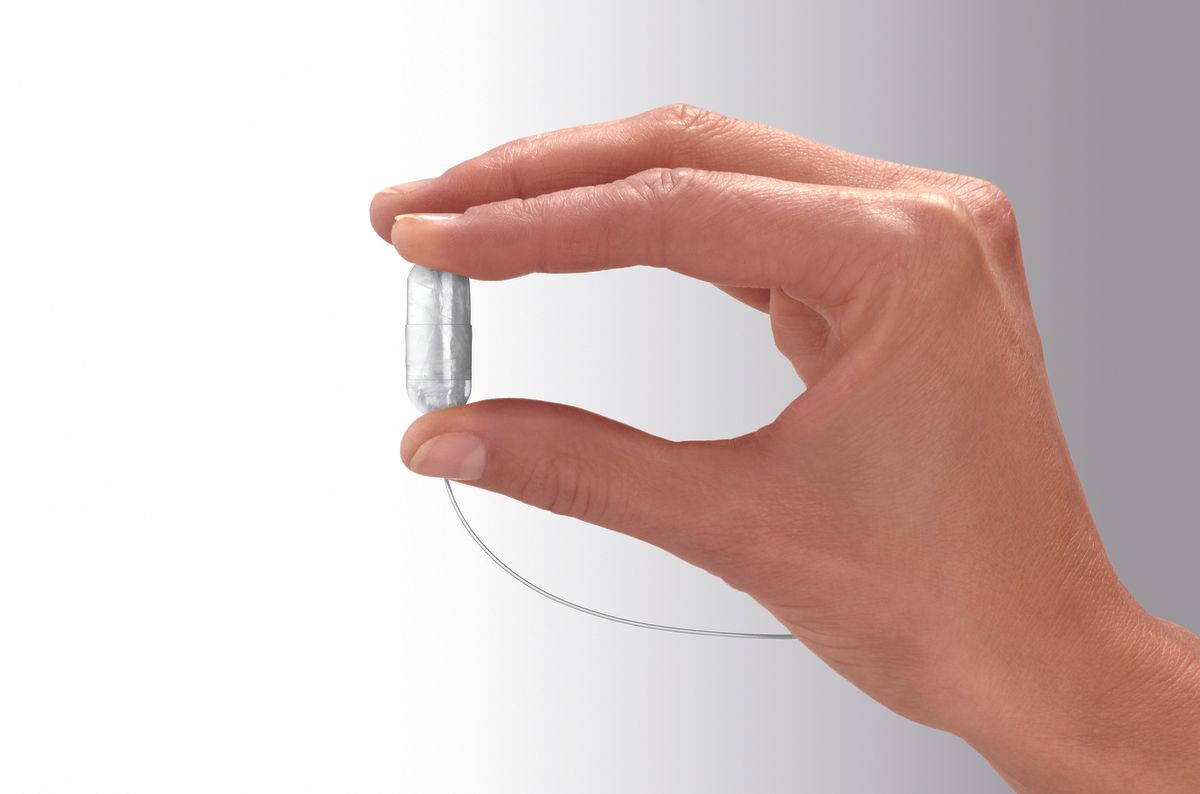New Obesity Treatment: Gas-Filled Balloons

SAN DIEGO – A new obesity treatment that involves swallowing a capsule that contains a balloon may help people lose more weight than they would by just dieting, a new study suggests.
For the treatment, people swallow a small capsule that contains a balloon, which a doctor then inflates with nitrogen-based gas through a catheter attached to the capsule. Once the balloon is inflated, it is slightly larger than a standard 8-ounce (237 milliliters) cup, and helps people feel fuller sooner, said the researchers, who presented the study here today (May 24) at Digestive Disease Week, a scientific meeting focused on digestive diseases.
In the study, 185 obese people (with a body mass index of 30 to 40), received the balloon treatment, called the Obalon 6-Month Balloon System. This involved swallowing a total of three balloons (a new one every three weeks), and then removing all the balloons after three months. A separate group of 181 people received a "sham" procedure, in which they swallowed sugar pills that doctors pretended to fill with gas, so that participants wouldn't know if they had received the real treatment.
Both groups also saw a dietician to help them lose weight. After six months, participants in the balloon group lost an average of 6.8 percent of their body weight, compared to an average of 3.5 percent in the sham group.
"Our research shows that the studied balloon system can help patients lose almost twice as much weight compared with lifestyle changes alone," study co-author Dr. Shelby Sullivan, director of bariatric endoscopy at Washington University School of Medicine in St. Louis, Missouri, said in a statement. "This is important because weight loss is very difficult, and a significant number of people are not successful in achieving their weight loss goals with diet changes and exercise." [Lose Weight Smartly: 7 Little-Known Tricks that Shave Pounds]
The study also found that that 64 percent of people who received the balloon treatment lost at least 5 percent of their body weight, whereas only 32 percent of the control group met that benchmark.
Side effects of the balloon treatment included abdominal cramping and nausea, but nearly all participants said these side effects were mild or moderate, according to the researchers.
Sign up for the Live Science daily newsletter now
Get the world’s most fascinating discoveries delivered straight to your inbox.
Currently, the Obalon balloon system is not approved by the U.S. Food and Drug Administration (FDA), so the treatment is not yet available in the United States. However, it is approved in several European countries and in Mexico. Sullivan received funding from Obalon Therapeutics, Inc., to conduct this research.
Another balloon system for weight loss, called ReShape Dual Balloon System, was approved by the FDA in 2015. Unlike the Obalon balloon, ReShape requires a doctor to insert the balloon through the mouth using a device called an endoscope. And ReShape is filled with liquid, not gas. Both ReShape and Obalon need to be removed by a doctor through the mouth.
Yet another balloon system for weight loss, called Ellipse, is also working toward FDA approval. Like Oblaon, Ellipse comes in the form of a capsule that patients swallow. However, Ellipse is filled with liquid, and it deflates on its own after four months, so it can pass through the digestive tract at the end of treatment. [5 Things Your Poop Says About Your Health]
A small study of Ellipse, involving 34 people, found that patients with Ellipse lost an average of 9.5 percent of their body weight, or 22 lbs. (10 kilograms), after four months of use.
Sullivan noted that because the three Oblaon balloons are given in stages, the system gives the stomach time to adjust to having the balloons in place; each time another balloon is added, it takes up more space.
Follow Rachael Rettner @RachaelRettner. Follow Live Science @livescience, Facebook & Google+. Original article on Live Science.

Rachael is a Live Science contributor, and was a former channel editor and senior writer for Live Science between 2010 and 2022. She has a master's degree in journalism from New York University's Science, Health and Environmental Reporting Program. She also holds a B.S. in molecular biology and an M.S. in biology from the University of California, San Diego. Her work has appeared in Scienceline, The Washington Post and Scientific American.

Watch robot dog and drone locked in fierce battle — blasting fireworks at each other in future warfare demo

A strange triangle will appear in the zodiac this month. How to see rare 'zodiacal light,' before it disappears.

2,500-year-old painted tomb with 'unique scene of smithy' discovered at Etruscan necropolis in Italy
Most Popular

